Archives
- 2025-11
- 2025-10
- 2025-09
- 2025-03
- 2025-02
- 2025-01
- 2024-12
- 2024-11
- 2024-10
- 2024-09
- 2024-08
- 2024-07
- 2024-06
- 2024-05
- 2024-04
- 2024-03
- 2024-02
- 2024-01
- 2023-12
- 2023-11
- 2023-10
- 2023-09
- 2023-08
- 2023-07
- 2023-06
- 2023-05
- 2023-04
- 2023-03
- 2023-02
- 2023-01
- 2022-12
- 2022-11
- 2022-10
- 2022-09
- 2022-08
- 2022-07
- 2022-06
- 2022-05
- 2022-04
- 2022-03
- 2022-02
- 2022-01
- 2021-12
- 2021-11
- 2021-10
- 2021-09
- 2021-08
- 2021-07
- 2021-06
- 2021-05
- 2021-04
- 2021-03
- 2021-02
- 2021-01
- 2020-12
- 2020-11
- 2020-10
- 2020-09
- 2020-08
- 2020-07
- 2020-06
- 2020-05
- 2020-04
- 2020-03
- 2020-02
- 2020-01
- 2019-12
- 2019-11
- 2019-10
- 2019-09
- 2019-08
- 2019-07
- 2019-06
- 2019-05
- 2019-04
- 2018-07
-
PKA signalling in the http www apexbt com media
2024-07-10
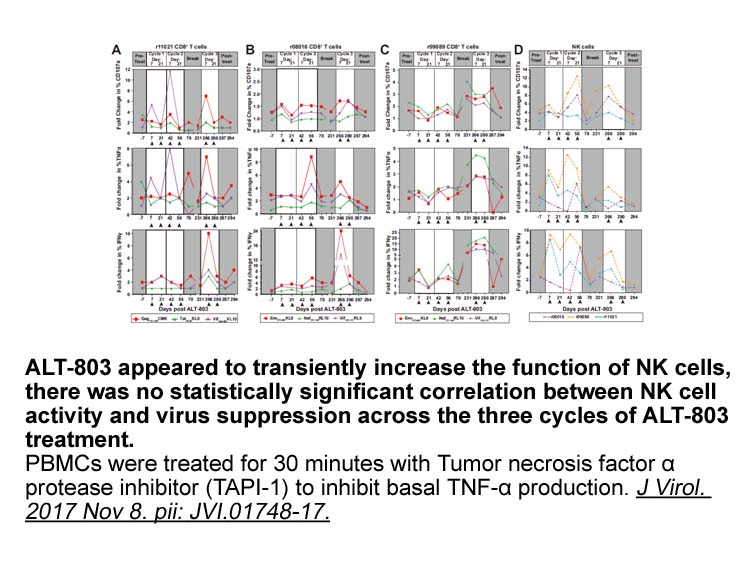
PKA signalling in the nucleus was thought to be due to the translocation of the catalytic subunit upon activation from the Matrine to the nucleus via diffusion [72]. However, a new understanding has emerged, as both the regulatory and catalytic subunits have been identified in the nucleus and funct
-
In order to investigate their effects in vitro therefore we
2024-07-10
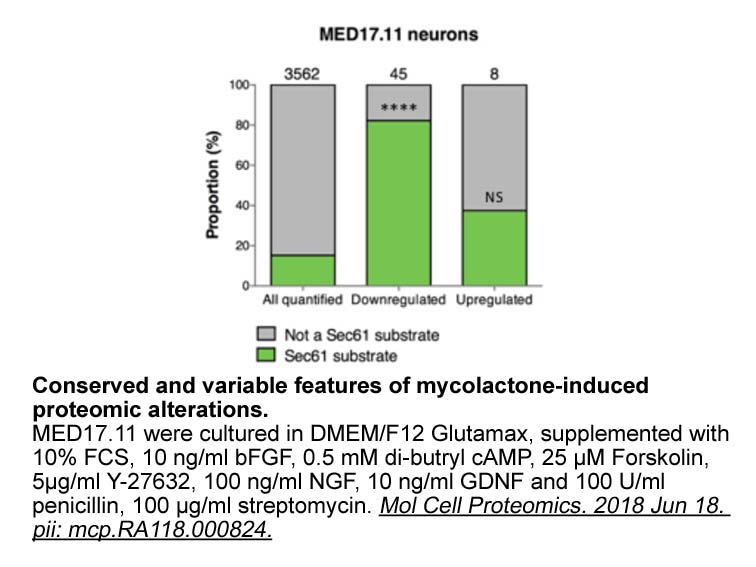
In order to investigate their effects in vitro, therefore, we first used TE671 cells, which have provided a useful source of human AChR for in vitro and radioimmunoassay studies. We found no marked effect of either MuSK-MG or SNMG sera on AChR numbers or on AChR subunit expression. This appears to c
-
br LOX in esophageal cancer Various studies suggest
2024-07-10

5-LOX in esophageal cancer Various studies suggest that abnormal levels of AA metabolites play an essential role in human esophageal adenocarcinogenesis (EAC). The key AA derivatives of 5-LOX signaling molecules namely include, 5-HETE, LTB4, and cysteinyl LTs, which are well-known to initiate inf
-
Phosphoinositide kinase PI K Akt has been
2024-07-10
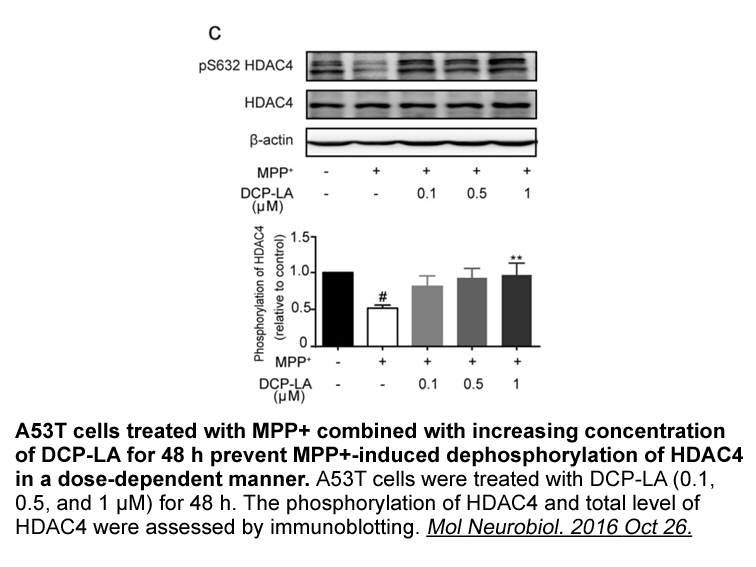
Phosphoinositide 3-kinase (PI3K)/Akt has been well demonstrated in the protection of myocardial cell against IR injury via increasing cardiomyocyte survival, inhibiting excessive autophagy, et al. (Kong et al., 2016). The glycogen phosphorylase mg of ERK1/2 also involves in the regulation of cardiac
-
Several in vivo and in vitro studies have
2024-07-10
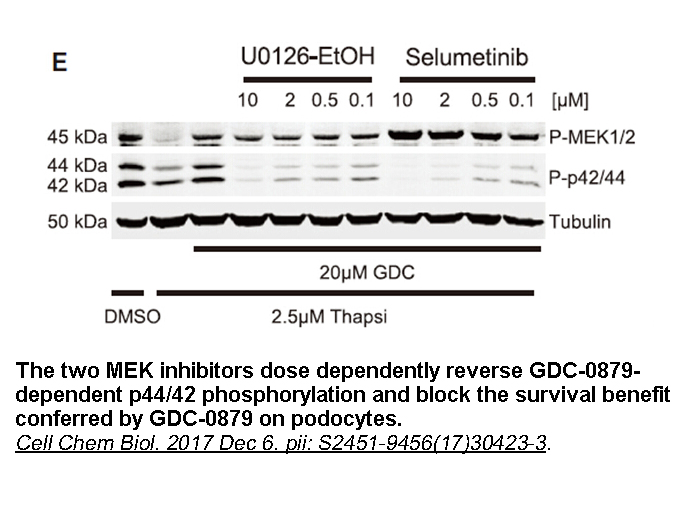
Several in vivo and in vitro studies have demonstrated changes in bioactive lipid profiles under hyperglycemic conditions and have linked these changes with increased leukocyte adhesion and vascular dysfunction during diabetes. This input has originated partly from lipidomic studies that showed elev
-
In addition to calpain I activity cathepsin activities
2024-07-10
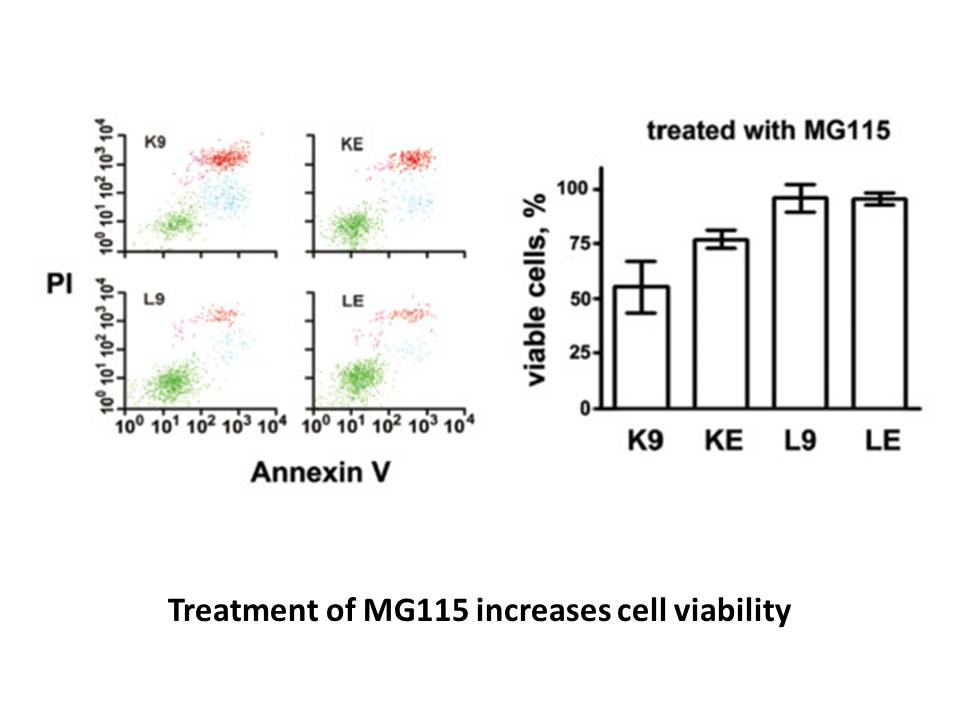
In addition to calpain I activity, cathepsin activities have been proven to be linked to apoptotic signaling. Cathepsin B and cathepsin D are two of the most abundant and well-investigated lysosome acid-dependent proteases that are involved in the apoptotic regulation (Ferri & Kroemer, 2001). Cathep
-
Besides above mentioned UV visible and fluorescence spectros
2024-07-10

Besides above-mentioned UV–visible and fluorescence spectroscopy methods, electron paramagnetic resonance (EPR) spectroscopy, the only analytical method that detect compounds having unpaired electrons known as free radicals, was rarely used in antioxidant capacity measurement (Amarowicz et al., 2004
-
LEE011 Second the choice of the PAABD is critical for
2024-07-10

Second, the choice of the PAABD is critical for an efficient and sensitive biosensor. The sequence of the PAABD should present high affinity and efficient recognition of the phosphorylated substrate, as opposed to poor affinity for the unphosphorylated substrate, and should display a fully reversibl
-
Despite the absence of disulfide bonds in its linear structu
2024-07-10
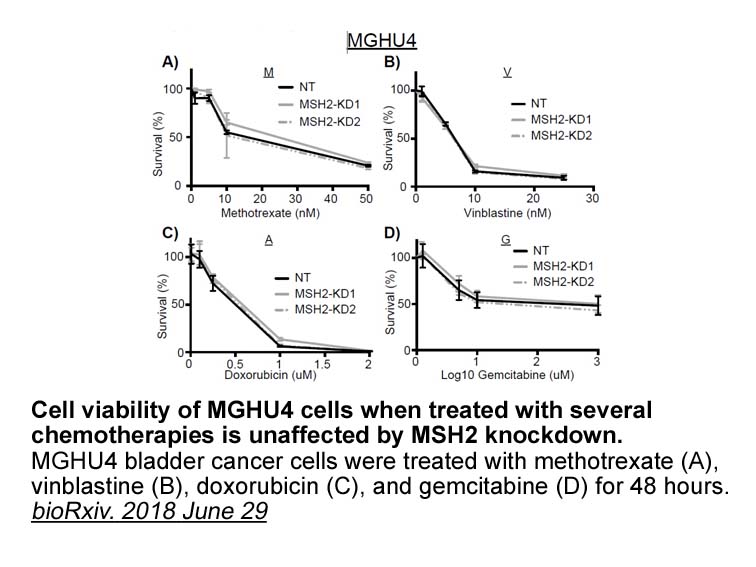
Despite the absence of disulfide bonds in its linear structure, KT43C displays antifungal and antibacterial activity. Disulfide bonds are determinants of defensins' integrity and have been reported to increase the antimicrobial activity (Jenssen et al., 2006). However, some linear derivatives of AMP
-
br STAR Methods br AMPK A Therapeutic Target in the
2024-07-09

STAR★Methods AMPK: A Therapeutic Target in the β Cell? Loss of pancreatic β cell function is a hallmark of the transition to a diagnosis of T2DM (see Glossary) 1, 2, 3, 4. AMPK activation has gained attention for the treatment of hyperglycemia in prediabetes as an insulin-sensitizing agent bec
-
prostaglandin receptor br Materials and methods br Results b
2024-07-09
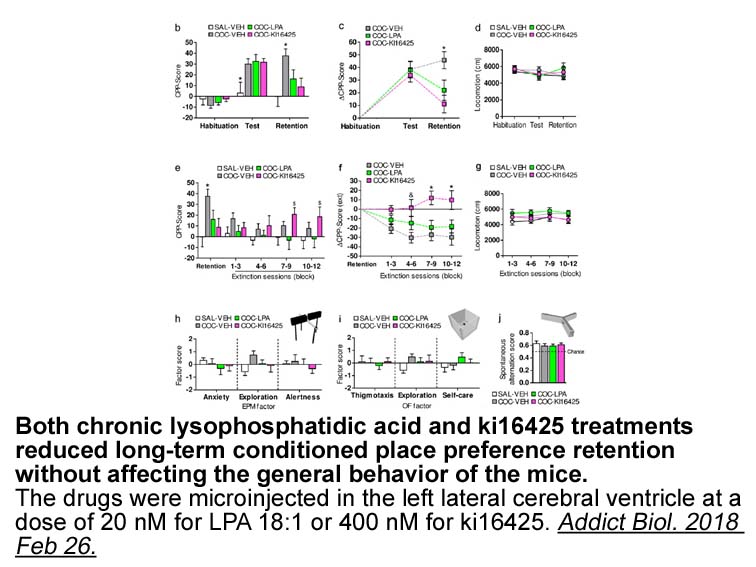
Materials and methods Results Discussion Endophilin A1 is a membrane-binding protein that is mainly distributed in the central nervous system (Giachino et al., 1997), localizes in the dendritic shafts and spines of mature neurons (Yang et al., 2015), and relates to the function and morpholo
-
br Material and methods br
2024-07-09
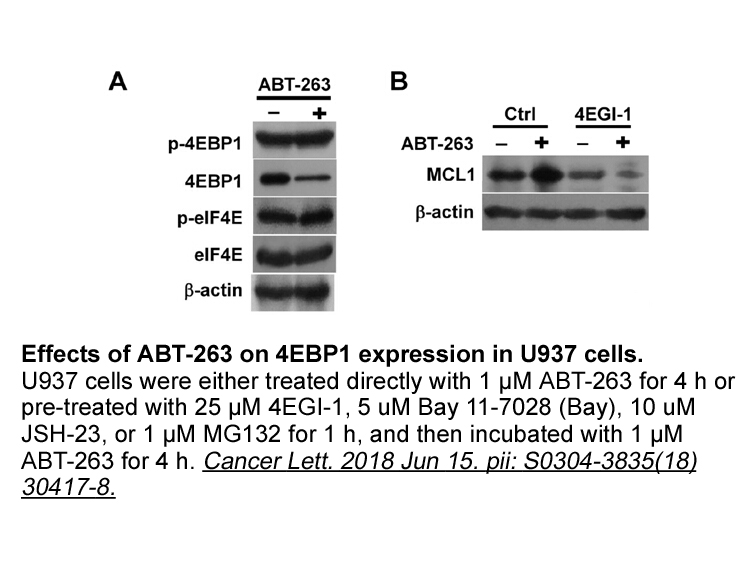
Material and methods Results Table 1 shows that in addition to Leu/CysAP and DPPIV, genes for AspAP, ArgAP, MetAP, APM and PSA are expressed in adipocytes. The kinetic parameters of these AP are also shown in Table 1, revealing that APM has the highest Vmax and catalytic efficiency (Kcat/Km),
-
br Available treatment modalities for individuals with NAFLD
2024-07-09
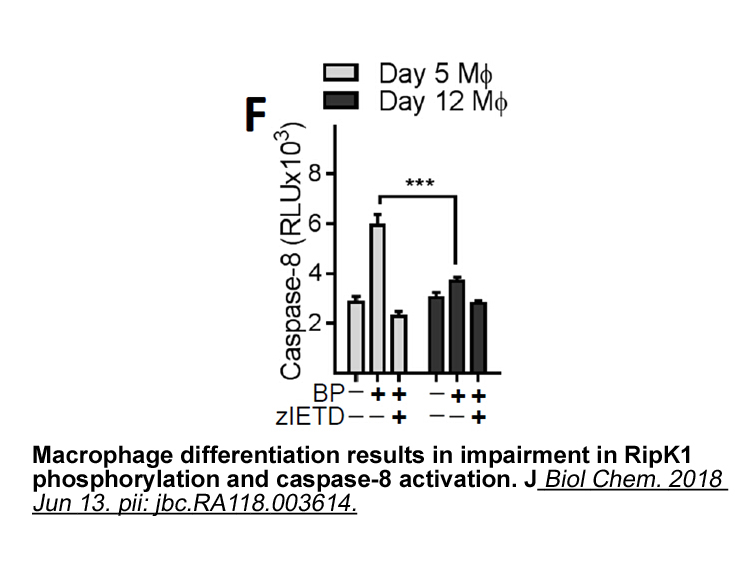
Available treatment modalities for individuals with NAFLD There are several treatment modalities currently used or in clinical trials for individuals with NAFLD. The most widely recommended treatment is a lifestyle modification plan. As little as 5% weight loss has been shown to improve NASH hist
-
Although several ARIs have reached various phases of
2024-07-09

Although several ARIs have reached various phases of clinical experimentation however most of them have been withdrawn either due to an insufficient bioavailability, their poor efficacy or adverse side effects. Currently Epalrestat is in clinical use for the treatment of diabetic neuropathy. The sid
-
br Conclusion br Introduction Lung
2024-07-09
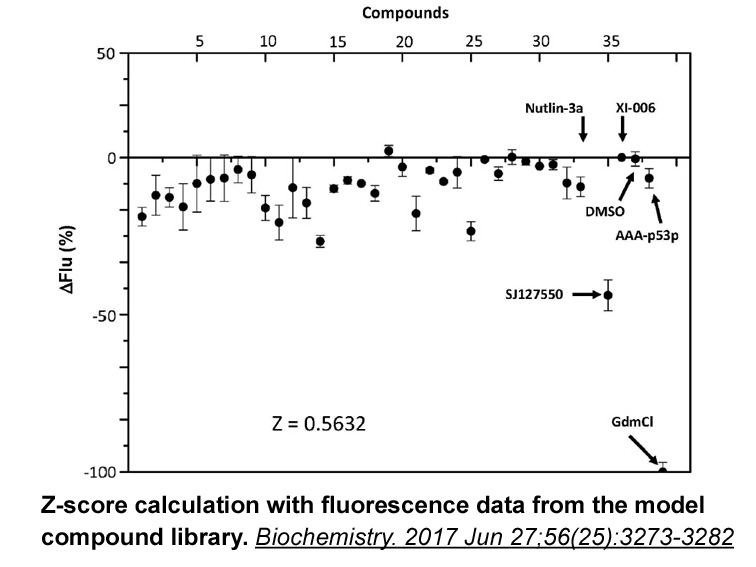
Conclusion Introduction Lung cancer is the principal cause of death by cancer and the third most common cancer worldwide (Sorber et al., 2016). Lung cancer has two main types: small cell carcinomas (approximately 20%) and non-small cell lung cancers (NSCLC) (about 80%) (Fan et al., 2016). NSC
15896 records 120/1060 page Previous Next First page 上5页 116117118119120 下5页 Last page